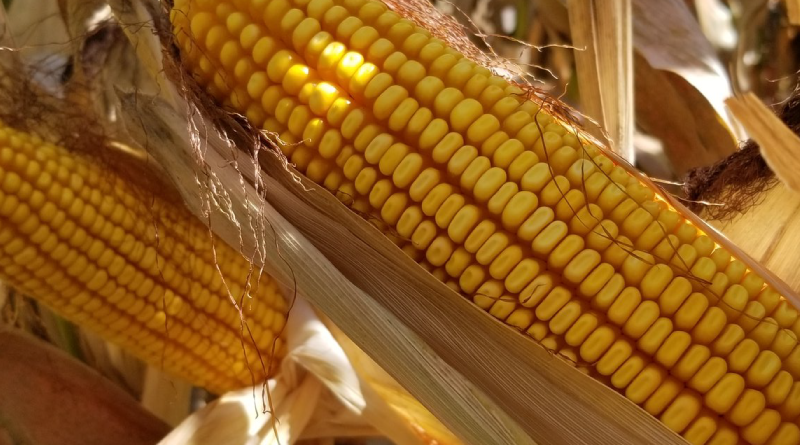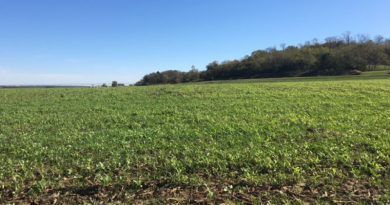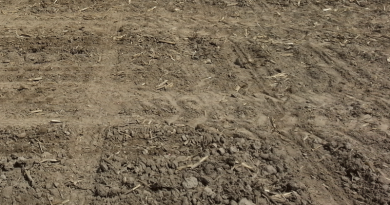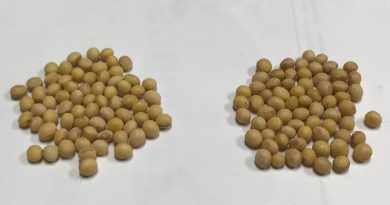Estimating Corn Dry Down
Corn and soybean fields are changing color, meaning harvest is shortly around the corner. Weather patterns of August and September play a large role in corn dry down and therefore, harvest timing. Below, we will cover a few strategies to help estimate grain moisture and forecast anticipated harvest dates.
Corn Growth Stage
Milk line can be detected on the back side of the kernel opposite the embryo, between R5 (early dent) and R6 (black layer). This is a line where the liquid and starch are divided as it works its way to the tip of the kernel. This line will recede down the kernel as it continues to convert resources to starch in the endosperm. Yield loss can occur until corn reaches the black layer stage; however, the loss slows as we progress from R5 to R6. We can estimate grain moisture and anticipated yield loss should frost occur between these stages (Table 1).
| Stage | Description | Est. Grain Moisture | Est. GDDs to Maturity | Yield Loss Due to Freeze |
|---|---|---|---|---|
| R5 | Early dent with milk line just visible to kernel cap | 50-55% | 400 | 35-40% |
| R5.25 | Milk line is 1/4 way down from kernel cap | 45-50% | 300 | 25-30% |
| R5.5 | Milk line is 1/2 way down from kernel cap | 40-45% | 200 | 12-15% |
| R5.75 | Milk line is 3/4 way down from kernel cap | 35-40% | 100 | 5-6% |
| R6 | Black layer formation with milk line absent | 30-35% | 0 | 0% |
Growing Degree Days
Warm days help speed up dry down and are the biggest driver in determining when fields can be harvested. Growing degree days (GDD’s) measure thermal time. For every additional 4 GDD’s received, corn will dry down an additional tenth of moisture (Table 2). The ability to dry corn diminishes significantly as we push planting dates later in the growing season due to cooler weather. Historically, we have observed an average of 0.6, 0.4 and 0.2 points of moisture lost per day for September, October and November respectively. When evaluating corn relative maturity, keep in mind that each day difference in relative maturity equates to roughly a 0.5 moisture difference if they were harvested the same day.
| DAILY GDD’s | ESTIMATED DRY DOWN |
|---|---|
| 12 | 0.5 |
| 16 | 0.6 |
| 20 | 0.7 |
| 24 | 0.8 |
| 28 | 0.9 |
Hybrid Characteristics
The methods above estimate moisture decline in a general sense. Realize the dry down rate will vary for individual hybrids and is determined by the physical characteristics of the hybrid. Some of the factors are:
- Husk Characteristics: This includes leaf number, thickness, ear coverage and how tight the husk is. The greater each one of the characteristics, the increased likelihood that dry down will be delayed.
- Ear Declination: If the ear remains upright, the greater the chance that moisture will be retained in the ear from rainfall events. Moisture will fall to the ground if the ear is pointed downward.
- Cob Diameter: The narrower the cob, the slower the dry down process will be.
- Kernel Type: Flintier kernels will dry slower than dent kernels due to them being harder.
As always, if you have any questions around harvest time and the dry down progression in your fields, contact your Burrus Representative.






